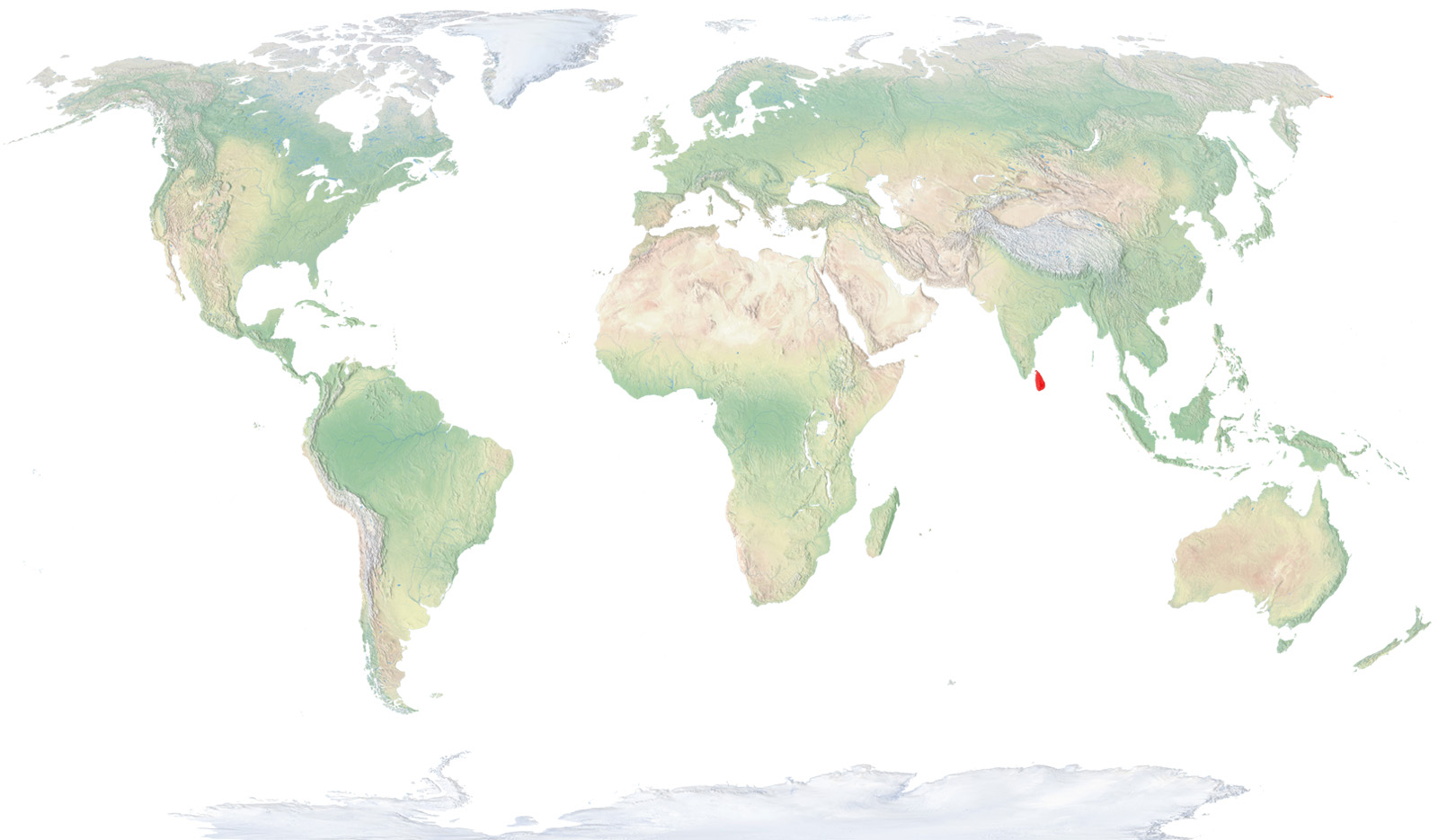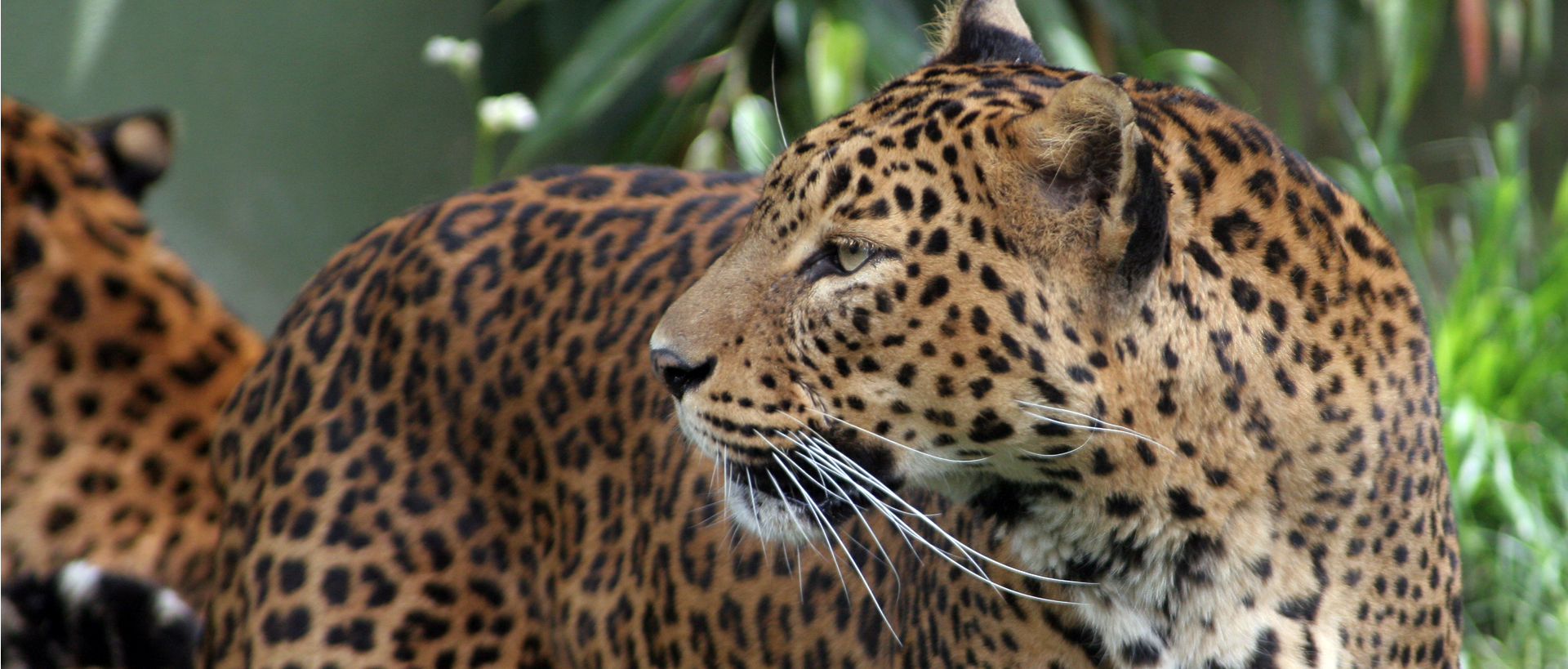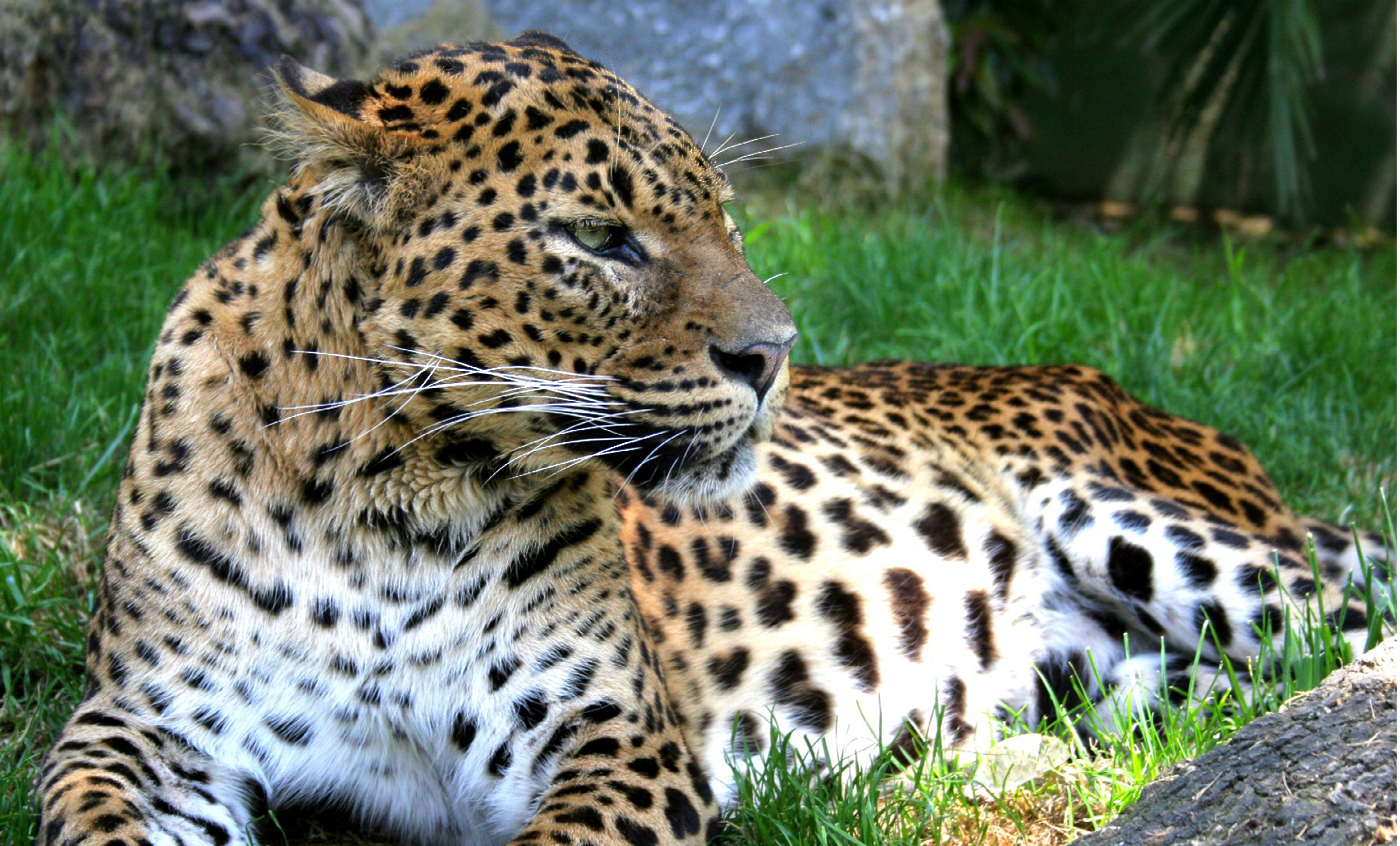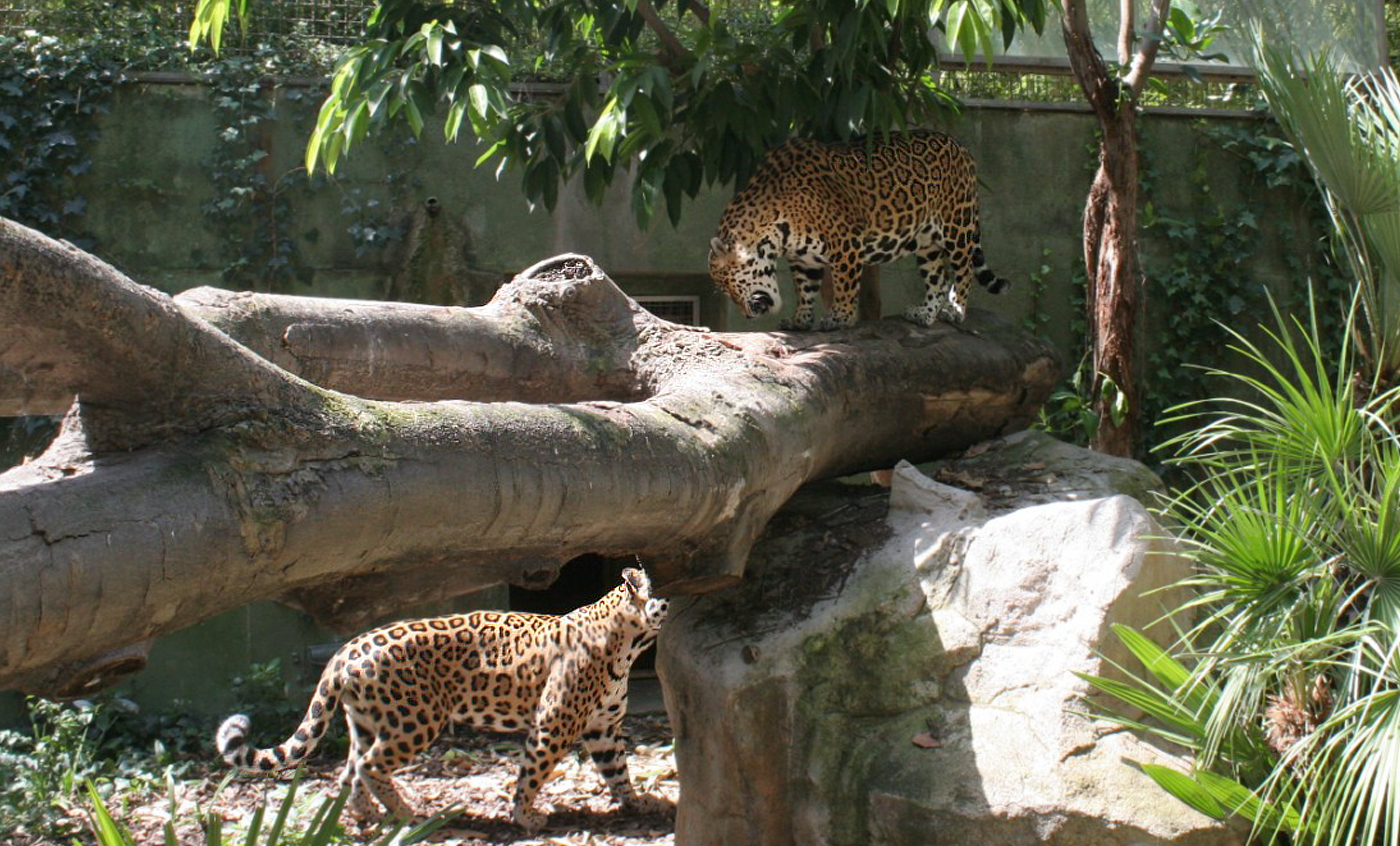Sri Lankan leopard
The leopard is a very adaptable predator that lives in dense forest and open ground in large parts of Africa and Asia. Its prey ranges from small animals to antelope and other mid-sized prey.
Our collection includes specimens from the Panthera pardus kotiya subspecies that is exclusive to Sri Lanka. Today these leopard communities are in grave danger of extinction.
Breeding program
Natural habit
The leopard is the felid that occupies the largest geographical area, as it lives in great part of Africa in southern Sahara, South-east Asia, small isolated populations in northern Africa, the Arab peninsula, Middle East and the Far East. The subspecies at the Zoo, Panthera pardus kotiya, is endemic of the island of Sri Lanka.

- Distribution / Resident
- Breeding
- Wintering
- Subspecies
Risk level
- Extint
- Extint in the wild
- Critically endangered
- In Danger
- Vulnerable
- Near threatened
- Minor concern
- Insufficient data
- Not evaluated
Taxonomy
Physical characteristics
Biology
Reproduction
Biology
Its coat is tawny or rusty, with dark spots all over its body, even its legs, lower part and tail. Males are slightly bigger than females. Melanistic leopards appear frequently.
It inhabits rainforests and forests with dense vegetation, although it can adapt to more open areas, such as forest-savannahs, shrublands or mountains.
It is a powerful predator that hunts of preys all kinds and sizes, from gazelles and antelopes to monkeys, birds and rodents. To prevent competition with more powerful carnivores, such as lions and tigers, it usually climbs trees with its prey, to eat them quietly. However, this behaviour does not take place in Sri Lanka, due to the lack of competition in the island.
Both sexes inhabit in overlapping territories, females occupying small territories within the wider territory of males. Reproduction can take place any season of the year. Two cubs are usually born each time.
Nocturnal and solitary, it occupies territories of 10 to 30 km2, marking trees with scratches and urinating on trunks, branches and tree stumps. By means of vocalizations, it warns of its presence in the territory. Females also emit this sound to attract males, during oestrus or to call their cubs. When they are 2 or 3 years old, males leave the mother’s territory to establish themselves in a new one, while females occupy part of the mother's territory.
As in almost all wolf subspecies in the world, the Sri Lankan wolf is critically endangered, due to the destruction of its habitat and to being hunted for its skin. This situation is worsened by genetic isolation of leopards’ population in the island and by the limited number of animals that can live in such a reduced area.
The Zoo of Barcelona takes part in the EEP of this species.






